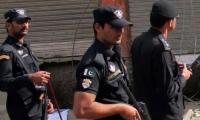GUJRANWALA: Gujranwala is the birthplace of two iconic personalities - Maharaja Ranjeet Singh and General Hari Singh Nalwa.
Both the personalities had political as well as military history of the sub-continent. It is obvious through the old buildings and available architectures and worship places that the city had a vast population of Sikhs, Jains, Hindus and Muslims. This city was the centre of activities during and post-Maharaja Ranjeet Singh’s era. There are six most popular buildings of the Sikh era, including Aatma Ram Ji and Samadhi of Charat Singh, Sheranwala Bagh (built by Maharaja Ranjeet Singh), Samadhi Maha Singh (father of Maharaja Ranjeet Singh), Jain Temple, Haveli Maharaja Ranjeet Singh and Samadhi of Charat Singh.
Though these structures have already been declared Special Premises under the Special Premises Ordinance by the Youth Affairs, Sports, Archeology and Tourism (YASAT) Department, yet they are in dilapidated condition.
The building of Aatma Ram Ji is believed to be his birthplace. There is also the Samadhi of Charat Singh (eldest son of Naudh Singh and father of Maha Singh) in the building. Since Maharaja Ranjeet Singh was a secular ruler, he had built a Mandir (Hindu temple) inside the courtyard. The building is currently being used by the DSP (Investigation) as his office. The whole area is 2.11 kanal with an existing boundary wall and is surrounded by buildings. Sheranwala Bagh was built by Maharaja Ranjeet Singh. The historical garden is called Sheranwala Bagh because of the Akharras of Pehalwans. There is also a Bara Dari in the middle of the garden. The garden is linked to the Samadhi of Maha Singh, which has been encroached on by the land grabbers.
A government school has also been built on the land of deteriorated Samadhi, posing a threat to the structure and the school students. Some land grabbers have been using the place as a godown for stocking oil and chemicals related to paint. Inside the Samadhi, once there were beautiful paintings engraved on the walls, which now have been damaged due to the misuse by the land grabbers.
The Haveli of Maharaja Ranjeet Singh is situated in the interior city near the fish market. The dilapidated Haveli is a proof of the administration neglect and demands immediate attention of the authorities. Original floor has vanished. Construction efforts for restoration have defaced some portions of the Haveli, but still a considerable portion is intact, which includes arches and courtyard.
Mandir Bahampr-e-Walla is another site of neglect. Half of its portion has fallen apart and the remaining structure is being used for commercial activities by illegal occupants.
The new deputy commissioner paid a detailed visit to these historical places about a week ago and expressed unhappiness over the poor condition of the national heritage and ordered immediate cleaning of the premises. He directed the AC Noshera Virkan to send a summary to the Punjab chief secretary, requesting him for allocation of the budget for restoration and renovation of the historical sites. The DC also ordered immediate removal of all illegal occupants from the sites and directed the tehsildar to provide complete details of the sites to the AC Noshera Virkan. The deputy commissioner stressed that all these sites had an immense potential for religious tourism and could generate huge revenue for the government. Meanwhile, on the directions of DC, all illegal occupants are being ousted from the historical sites and the Samadhi was being cleared from chemicals that were stored there.
During hearing, Additional Advocate General Punjab informed court that LHC has submitted its response
During conference, participants assessed evolving maritime situation in region with focus on national security
Event brought together formidable lineup of partners from across education and development sectors
For more than seven decades, IPI has advocated at forefront for journalistic rights amid political pressure
USEFP said US govt-funded exchange programmes, including Fulbright Programme, remained in place to Pakistanis
Challenges such as persistent inequalities, weak implementation, and gender-related barriers continue to limit broader...







